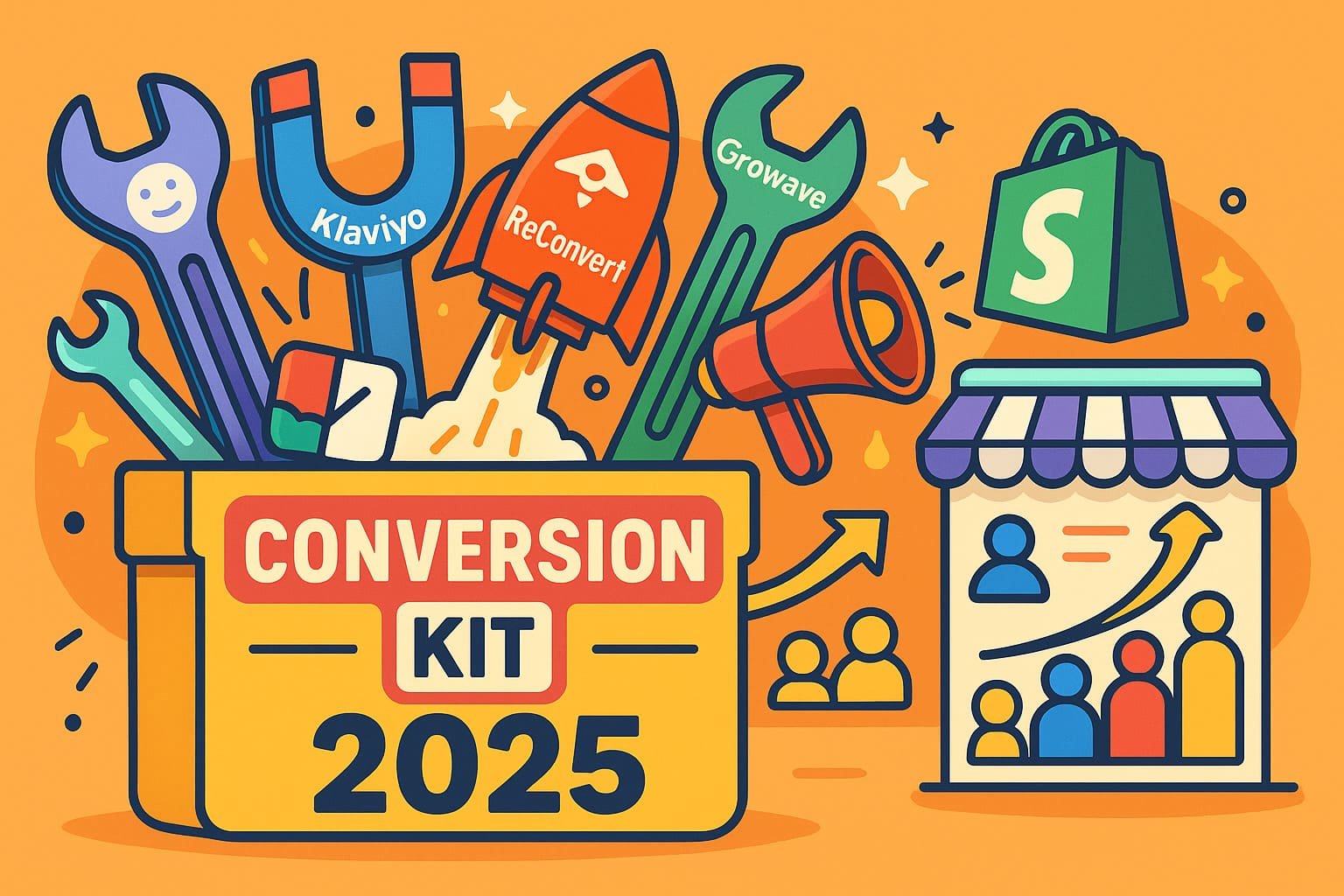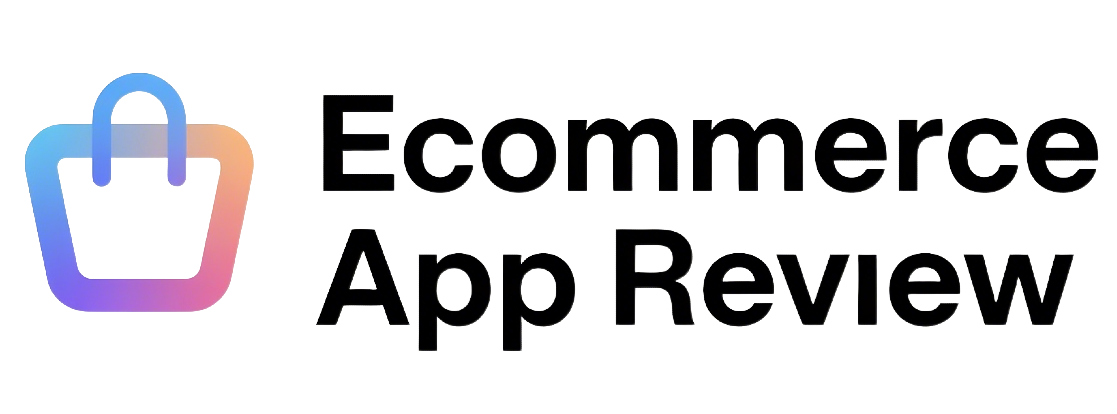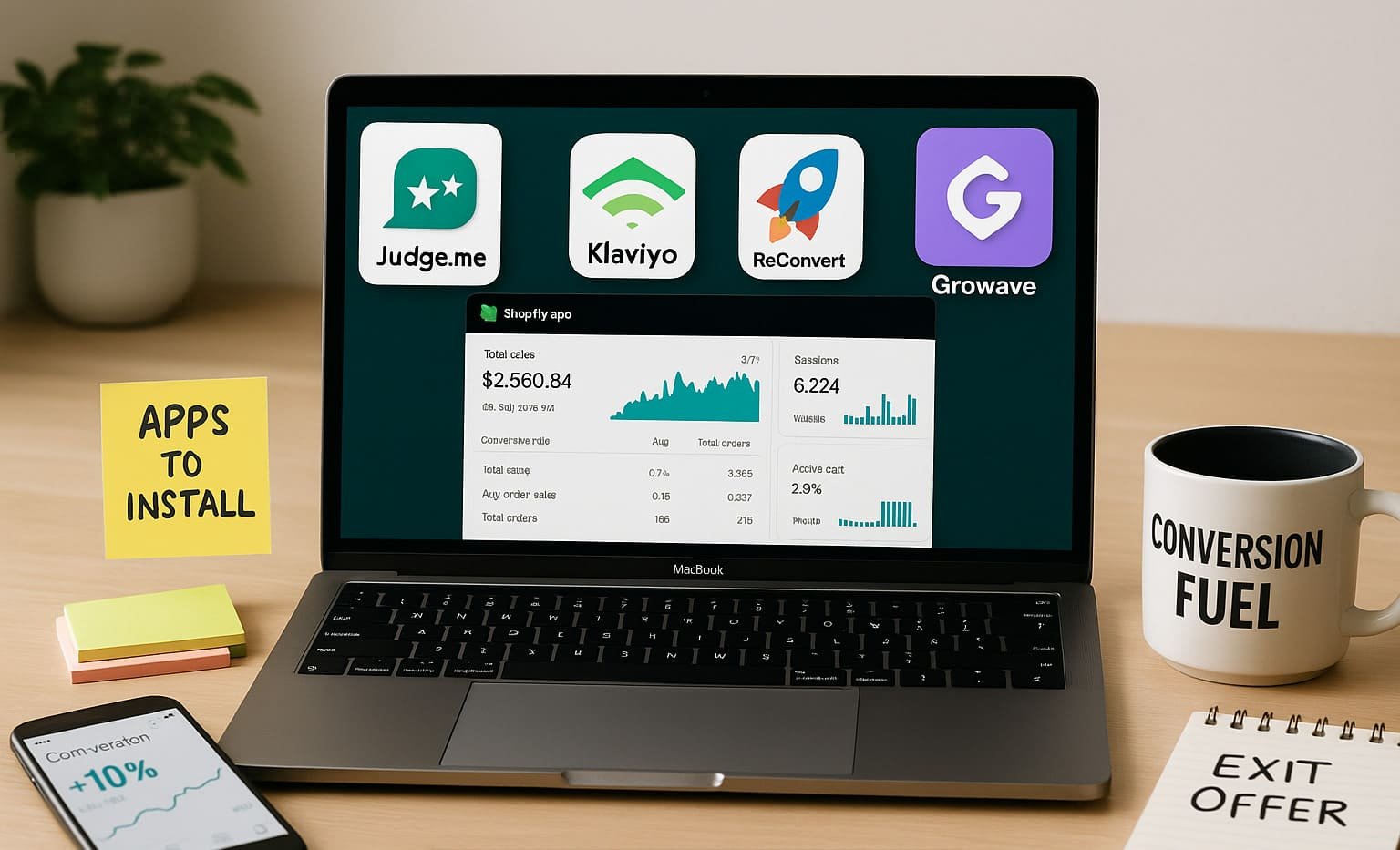If you’re a Shopify beginner and think conversions will magically happen because your product is so amazing… think again. Shopify gives you a beautiful blank slate. But let’s be clear: it doesn’t come with a built-in conversion strategy, traffic generator, or customer loyalty system. Out of the box, your store is basically a nice-looking shed on the edge of the internet. No signs… No lights. No foot traffic. Just silence.
This is where most new store owners get stuck. They launch, they wait, and they wonder why nothing’s happening. Sound familiar?
Here’s the deal: success on Shopify doesn’t come from luck, it comes from systems. And those systems are powered by apps. The right Shopify apps for beginners act like growth steroids for your store. They help you turn traffic into buyers, buyers into repeat customers, and repeat customers into fans.
Let me save you from the trial-and-error spiral. This isn’t fluff or theory. I’ve tested every tactic here in the real world. What follows are the 10 essential types of apps every Shopify beginner needs in 2025, plus exactly how to use them without screwing up your store speed or blowing your budget.
Welcome to the Shopify beginner’s ecommerce playbook. Let’s dig in.
Why Apps Matter (Especially for a Shopify Beginner)
You wouldn’t open a brick-and-mortar shop without lights, signs, or a cash register, right? Same story here. Shopify apps are your digital store upgrades. The difference between “window shoppers” and real customers often comes down to the tiny tools you install.
In 2025, shopper expectations are through the roof. Fast, intuitive stores win. Slow, confusing ones lose. Apps help you get the edge without hiring a dev team.
You need leverage. That’s what apps give you. Whether it’s collecting leads, converting traffic, building trust, or increasing order size, there’s an app for that.
I’ve seen brand-new stores go from dead quiet to buzzing in 30 days, purely by installing the right combo of apps. But don’t go on a download spree. You want smart, strategic installs that solve real problems. Let’s break down the categories.
1. Product Review Apps for a Shopify Beginner
Social proof is everything. If no one’s talking about your product, it might as well not exist.
Why it matters:
Trust is currency. Shoppers today check reviews before buying anything. No reviews? You’re invisible. It’s not personal, it’s behavioral psychology.
Judge.meLet me tell you a story. One client of mine launched with a killer product, organic dog treats, handcrafted and all that jazz. They couldn’t sell a single unit for weeks. Then we added Judge.me, emailed 5 friends to leave honest reviews, and boom, sales picked up. Turns out strangers trust reviews more than ad copy. Shocker.
What to use:
- Judge.me : Fast, free, and lets you show reviews everywhere.
- Loox : For beautiful image-heavy reviews. Perfect for fashion, beauty, or anything visual.
How a shopify beginner should use it:
- Send automatic review requests post-purchase.
- Offer a small coupon in return.
- Display reviews on product pages, homepage, and email footers.
- Repurpose reviews into ad creatives and social posts.
Our Add:
If you’re still “waiting for reviews,” you’re delaying success. Ask. Incentivize. Publish. Period.
2. Email & SMS Marketing Apps for a Shopify Beginner
If you’re not building a list, you’re building someone else’s business.
Why it matters:
Only 2% of visitors buy on their first visit. You need to bring them back. Email and SMS are your owned channels. You control them. No algorithm in the way.
I had one store that made zero email revenue. They claimed, “Our customers just aren’t email people.” Wrong. They just had a crappy setup. We added a Klaviyo welcome series, abandoned cart flow, and a post-purchase cross-sell. Within two weeks, email was doing 22% of total revenue.
What to use:
- Klaviyo : Powerhouse for segmentation, automation, and integrations.
- Shopify Email : Good starter if you’re just dipping your toes.
How a shopify beginner should use it:
- Create a welcome series (3–5 emails).
- Add abandoned cart + browse abandonment flows.
- Promote launches and loyalty updates.
- Segment by behavior, not just demographics.
Bonus tip:
Integrate with your loyalty app to send point balances and reward reminders. This stuff stacks.
Our Add:
Don’t write emails like a robot. Be a human. Use first names. Tell stories. Make offers.
3. Upsell & Cross-Sell Apps for a Shopify Beginner
Don’t leave money on the table. Ever.
Why it matters:
Customer acquisition is expensive. Increasing average order value (AOV) is how you get profitable. If you’re spending $20 to acquire a $25 order, you’re bleeding. Add $15 with upsells? Now we’re talking.
What to use:
- ReConvert : Optimizes the post-purchase thank-you page.
- Bold Upsell : Triggers offers in-cart or pre-checkout.
How a shopify beginner should use it:
- Bundle complementary products.
- Offer limited-time deals on the thank-you page.
- Use data to suggest frequently bought together items.
Strategy tip:
Tie upsells to customer logic. If they buy shampoo, upsell conditioner. Not tennis balls.
Our Take:
I turned a store’s $32 AOV into $58 using nothing but checkout upsells. No ad spend. Just logic.
4. Loyalty & Rewards Programs for a Shopify Beginner
Want customers to come back? Reward them.
Why it matters:
Returning customers spend more and buy more often. A loyalty program turns first-timers into repeat fans. This is how you build a tribe—not just transactions.
What to use:
- Growave : Combines loyalty, wishlist, and referrals.
- Yotpo Loyalty : Trusted and integrates well with email tools.
How a shopify beginner should use it:
- Offer points for signups, purchases, reviews, referrals.
- Create VIP tiers. Gamify the experience.
- Automate reward notifications. Push urgency.
Real world win:
A skincare brand I worked with went from 8% to 27% returning customers in 90 days. They didn’t change the product. They just made rewards visible and simple.
Our Add:
If customers don’t know they’re earning rewards, they won’t act on them. Make it obvious.

5. Cart Abandonment Recovery for a Shopify Beginner
Shoppers are flaky. That doesn’t mean you let them go.
Why it matters:
Most carts get abandoned. Your job is to follow up. Automatically. This is low-hanging fruit.
What to use:
- Klaviyo : Includes abandoned cart flows.
- SMSBump : SMS reminders with urgency.
How a shopify beginner should use it:
- Time-based messages (1 hr, 12 hrs, 24 hrs).
- Add product images and testimonials.
- Include urgency and discounts, sparingly.
Our Truth:
Your abandoned cart strategy should feel like a concierge service, not spam.
6. Live Chat & Support Widgets for a Shopify Beginner
Questions kill conversions. Instant answers close deals. Every store owner needs to be able to answer questions quickly. Get your feet wet with these first, then when you’re ready to graduate into AI powered chatbots, that option is available. But for Shopify Beginners, a human touch goes a long way.
Why it matters:
A confused customer is a lost customer. Most people won’t email you. They’ll bounce. But live chat? That gives them a frictionless lifeline.
One of my clients sold high-end leather bags. Beautiful stuff. But traffic wasn’t converting. We added a live chat tool with preloaded FAQs and a 30-second reply promise. Boom, conversion rate jumped 28% in three weeks.
What to use:
- Tidio : Combines chat, bots, and automation.
- Tawk.to : Free and surprisingly robust.
How a shopify beginner should use it:
- Set availability expectations.
- Use canned responses to speed things up.
- Add proactive messages on product pages (e.g., “Need help choosing a size?”)
Tom’s Add:
Don’t pretend to be online 24/7. If you’re not around, set proper offline messaging. Honesty > faking it.
7. Search & Navigation Apps for a Shopify Beginner
Shopify beginners beware: if people can’t find it, they won’t buy it.
Why it matters:
Out-of-the-box Shopify search is… fine. But only fine. If you’ve got more than 10 SKUs, it’s probably costing you sales. Filters, smart search suggestions, and typo tolerance can make or break usability.
Ever seen someone rage-click through a site, then leave? That’s bad search at work. Fix it.
What to use:
- Searchanise : Solid AI search with predictive results.
- Shopify Search & Discovery : Free and native, getting better in 2025.
How a shopify beginner should use it:
- Enable filters by category, price, tags.
- Use analytics to see what people are searching.
- Add auto-suggestions for top products.
Strategy:
Boost seasonal or bestselling items to the top of results. People rarely scroll.
Our Reality Check:
Your homepage isn’t your money-maker. Your search bar is. Make it stupid-simple to use.
8. Wishlist & Save-for-Later Features for a Shopify Beginner
Buying isn’t always instant. Give people a way to come back.
Why it matters:
Wishlists aren’t just feel-good features. They capture intent. And they give you marketing ammo.
Someone adds a product to their wishlist? That’s gold. Now you can remind them, nudge them with a discount, or notify them when it’s low in stock. It’s like legal mind-reading.
What to use:
- Wishlist Plus by Swym : Industry fave with email integrations.
- Growave : Covers wishlists alongside loyalty and reviews.
How a shopify beginner should use it:
- Make the “heart” icon visible on every product.
- Sync wishlist activity with email or SMS.
- Use reminders: “You still want this?” (Yes, they usually do.)
Our Add:
If a customer makes a wishlist and forgets it, you forgot to market to them. Fix that.
9. Bundling & Volume Discount Tools for a Shopify Beginner
Smart packaging boosts perceived value, and profits.
Why it matters:
People love deals. They love bundles more. Why? It makes decisions easier and increases their sense of value. “Buy 3, save 15%” triggers brain chemistry.
I worked with a fitness brand that sold supplements. One protein tub? $39. Bundle of 3 with shaker bottle? $109. The bundle outsold the single SKU by 6 to 1. Margins went up too.
What to use:
- Bundler – Product Bundles : Free to start, flexible.
- Volume & Discounted Pricing by HulkApps : Great for tiered offers.
How a shopify beginner should use it:
- Group complementary items (shampoo + brush + serum).
- Offer multi-buy discounts.
- Test bundles on product pages and post-purchase upsells.
Strategy tip:
Use urgency. “This bundle is only available through July.” Limited offers move faster.
10. Analytics & Reporting for a Shopify Beginner
If you don’t track it, you can’t fix it.
Why it matters:
Most beginners guess. That’s dangerous. You need real data to guide your decisions—especially when you’re tight on budget.
Analytics isn’t about staring at charts. It’s about learning what pages convert, what emails get clicks, what upsells get ignored. Then optimizing.
What to use:
- Lifetimely : Lifetime value analytics and cohort tracking.
- Better Reports : Pulls deep reports from Shopify data.
- Shopify Analytics : Use it! But go deeper when you can.
How a shopify beginner should use it:
- Track conversion rate by traffic source.
- Look at customer journey drop-off points.
- Create custom dashboards for AOV, retention, LTV.
Tom’s Add:
Stop trusting your gut. It’s full of pizza and bad assumptions. Trust your data.
Shopify Beginner Bonus: “Frequently Bought Together” – The Amazon Effect
Ever notice how Amazon shows you three items side-by-side with a little checkbox and a “Buy All Three” button? Yeah. That’s not by accident. It’s one of the highest-performing tactics in ecommerce. Why? Because it does the thinking for the customer.
Why it Works:
- It removes decision fatigue.
- It leverages trust by grouping common pairings.
- It boosts AOV with minimal effort.
You’re essentially saying: “Smart shoppers buy these together. Want in?” And most people do.
How to Do It on Shopify:
- Use apps like Frequently Bought Together or Frequently Bought Together PRO.
- Link products that naturally go hand-in-hand, cleanser + moisturizer, socks + shoes, charging cable + power bank.
- Test different bundles and check your analytics weekly.
Our Take:
This strategy alone turned one of my client’s $29 sales into $78 average checkouts. Just by suggesting smarter combinations. No extra ads. No new products. Just better UX.
Use it. Amazon made billions off this idea, and your store can ride the same wave.
How a Smart Shopify Beginner Chooses the Right Apps (Without Overloading Your Store)
Apps are powerful. But too many = a slow site, messy UX, and weird bugs. Be selective. Start with one app per category. Pick tools that integrate well with each other (e.g., Klaviyo + Yotpo). Prioritize performance and ease-of-use over fancy dashboards.
Ask yourself:
- What’s my #1 growth blocker?
- Which category solves that fastest?
- Can this app scale with me in 12 months?
Then test. Evaluate. Optimize.
Shopify Beginner Checklist: What You Should Do Today
- Install a product review app (Judge.me is great).
- Set up Klaviyo flows: Welcome, Abandoned Cart, Post-Purchase.
- Add ReConvert to your Thank You page.
- Turn on Shopify Search & Discovery.
- Install Wishlist Plus + connect to Klaviyo.
- Test a basic loyalty program using Growave.
- Track key metrics: AOV, CR, return rate.
You don’t need 50 apps. You need 10 good ones, each doing their job. That’s it.
Final Word
Apps don’t make a business. But they do make your store work better. They’re levers. Pull the right ones and you’ll see real gains—more sales, better retention, smarter marketing.
But you’ve got to treat them like tools, not magic bullets. Think like a builder. What’s the next thing you need to improve? Then pick the app that fixes it.
This isn’t about tech. It’s about systems. And the sooner you install them, the faster your store grows.
Want More No-BS Advice Like This?
If this guide slapped you awake (in a good way), go binge the rest of our blog. We’ve got deep dives on the best Shopify apps, real talk about what actually moves the needle, and step-by-step breakdowns you won’t find in generic SEO fluff.
Check out more here 👇


1 thought on “10 Important Apps For Every Shopify Beginner in 2025”